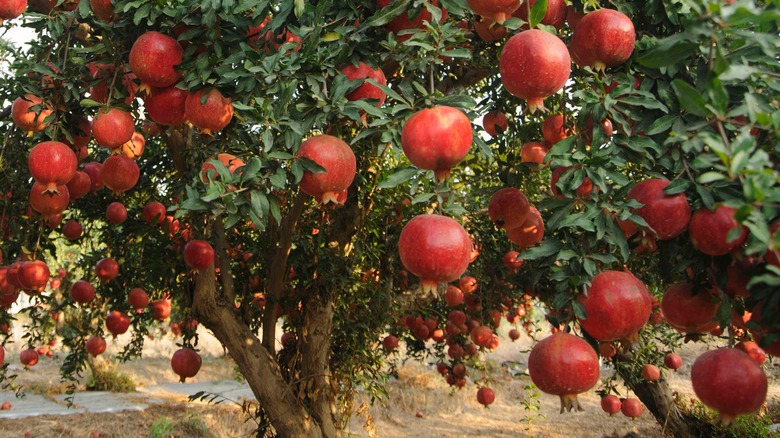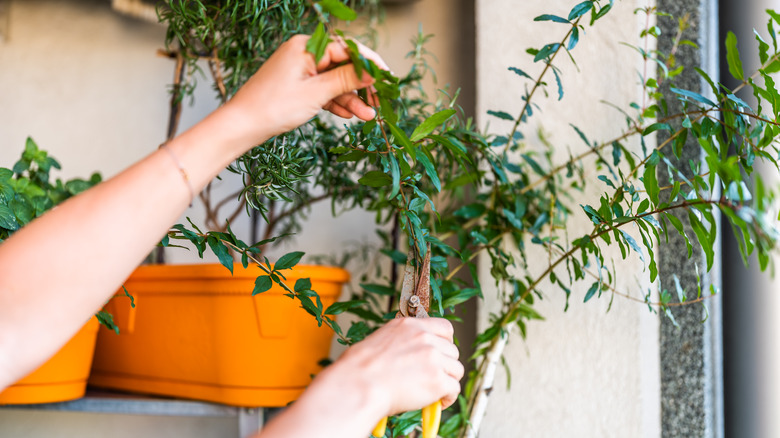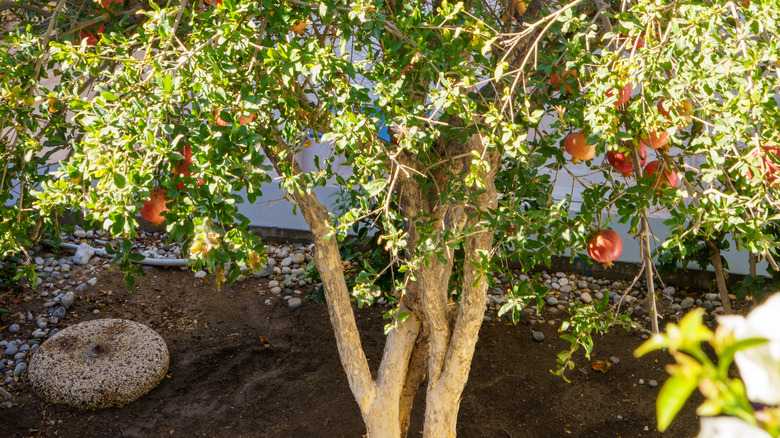Successfully Transplant A Pomegranate Outdoors Without Damaging It
Whether you have cultivated a pomegranate plant from seed or purchased a potted sapling tree, you are probably hoping to eventually plant it in your yard. But when that time comes, how do you transplant your pomegranate safely and healthily? Spring planting is best for potted nursery pomegranate trees, so hold on to your potted pomegranate for a few months before moving it outside. When spring arrives, you'll be ready to transplant it to the perfect spot.
As a hardy fruit tree that can happily grow in rocky soil, the pomegranate (Punica granatum) is approachable for beginner fruit tree gardeners. Though it is native to the Middle East, it can just as easily thrive in warm North American gardens, particularly those in USDA Plant Hardiness Zones 8 through 10. Even if your pomegranate tree is healthy and strong, don't expect too much from it right after transplanting. The plant will take anywhere from three to five years to fruit, so patience is key. Following proper transplantation procedures will help the tree produce fruit on the faster end of that timeline.
How to transplant your pomegranate tree
Once transplanted, growing and taking care of your pomegranate tree is a simple task, but transplanting an indoor potted pomegranate is a bit different from direct planting. First, you'll need to acclimate the seedling or sapling to the environment. Once any chance of frost has passed, set the pot outside for a few hours every day, increasing its exposure over a few weeks. While you're waiting for your pomegranate to acclimate, pick a spot for it in your yard. For optimum tree health, choose a location that sees six to eight hours of direct sun per day and has well-draining soil. Pomegranates can grow well in both acidic and alkaline soils, but they require regular sunlight to bear fruit.
When your pomegranate sapling is ready for transplantation, remove it from its pot, and wash away some of the soil clinging to the roots, which will help loosen them. Dig a hole twice as wide and just as deep as the root ball, allowing the top of the root ball to sit at ground level. Nestle the pomegranate into its new home, and cover it with soil until the hole is filled.
Caring for your pomegranate tree after transplantation
Though pomegranate trees are relatively low maintenance, don't forget about yours after transplanting. In the months following transplantation, water your plant regularly, especially if your area is not experiencing significant rainfall. Placing mulch around the tree will help the soil maintain optimum moisture and nutrient levels. Remember that pomegranate trees are native to warm, humid areas, so try to keep the tree as warm and moist as possible to encourage fruiting.
While pomegranate trees should not need pruning, especially in their first year, you can prune them in late winter during the tree's dormant period. Instead of regular pruning, make sure to remove dead branches and uncross any branches that grow on top of each other. A pomegranate tree will usually reach only 6 to 12 feet tall, so don't be alarmed if your tree seems a bit petite, as they are more like shrubs unless trained to grow into tall, stately trees.


